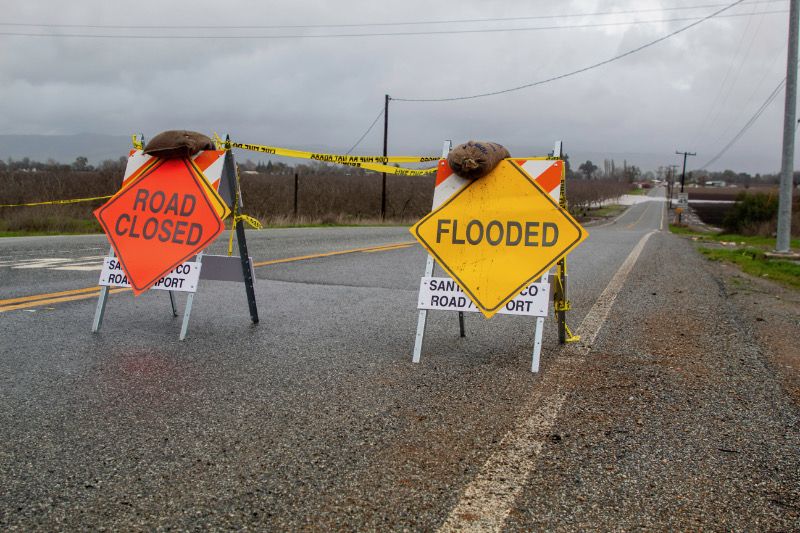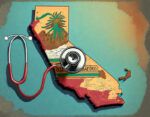Cali-Storm Mania!
If the setting was Seattle or London, this would be any other day in winter. However, this is California after having some of the driest winter seasons on record, Californians are just not accustomed to the sight of back-to-back atmospheric rivers.
With more storms forecasted across California, we must be prepared and understand how to navigate through a rather eventful winter. In a briefing hosted by Ethnic Media Services in partnership with Listos California, a program of the Governor’s Office of Emergency Services (Cal OES), experts outline the current impact of the storms in California and share resources available to Californians, ensuring their safety and support.
Speakers

- David Lawrence, National Weather Service Liaison, Cal OES State Operations Center (SOC) Meteorologist/Emergency Response Specialist, National Weather Service Liaison to Cal OES
- Diana Crofts-Pelayo, Assistant Director, Crisis Communication & Public Affairs, Cal OES
- Vance Taylor, Chief, Office of Access and Functional Needs, Cal OES
- Corin Buchanan, Deputy Secretary for Policy and Strategic Planning, CA Health & Human Services Agency
This winter has been a very active winter for California. A few months ago, we were dealing with a devastating drought hoping that we will finally see rain. I guess our wishes were somewhat granted.
This is the new reality, however. ‘Weather whiplash’ as some describe is going to become more of a reality than a mere phenomenon. Reflecting on the recent parade of storms in California since December, Diana Crofts-Pelayo amplifies the current narrative in regard to climate change. “Our climate is changing and at the end of the day the hots are getting hotter, the wets are wetter, and the dry dryer. So, with that we are having to rapidly evolve our response and preparedness messaging to really fit a whole host of different communities. I think that we never really went away from the January storms.”
Croft-Pelayo emphasizes the importance of being prepared and staying alert for rapidly changing conditions. With intensifying storms, Pelayo states that the state and Federal government are working around the clock to provide essentials and safety to people impacted by the storms. However, it is critical that residents also take steps to minimize damage. Sign up for local community warning systems, evacuate immediately, have an emergency kit with necessities and important paperwork. Lastly, don’t drive around barricades as they are used by responders to direct traffic, safely.
Considering the break and lighter rainfall we have witnessed in the last few weeks; one might think that the storms and respective impact have come to an end. According to experts in the briefing, not necessarily.
According to David Lawrence, there might be more rain in store for us throughout the month of March. When asked about an outlook beyond March, Lawrence responds that the future can’t be predicted. “There is no strong signal, a climate signal, we say, to predict right now, as we get that far out even beyond about April the first, it gets very murky out there, so unfortunately, this is one of those years that will be very difficult to to try to predict what happens beyond that period some years we’re able to have a much better feel for it. This is not one of those years.” Lawrence highlights that Oregon and Washington have seen a relatively dry winter compared to normal.
With the increased intensity and frequency of inclement weather, it is important we start focusing on preparedness. As Vance Taylor puts it, “When I think of preparedness, I think of it as a double-sided coin. There is working city, county and state government here to assist, and the other side of that coin is, what can these individuals do to prepared to be safe before, during, and after disasters.”
Tips Provided by Vance Taylor during the briefing:
Prepare for Loss of Power
- Keep your equipment charged and conserve power when possible.
- Work with programs like Disability Disaster Access & Resources to secure backup batteries.
- Activate friends, family, and care providers to assist during power outages.
Create a Plan to Evacuate
- Make a list of friends, family members, co-workers, neighbors, or others who can help you evacuate.
- Follow the guidance of local authorities.
- Learn different evacuation routes to leave your community.
- Practice your plan regularly.
Get Emergency Alerts
- You need reliable information to know what to do and where to go.
- Know what disasters or hazards affect your area and where to go if you need to evacuate.
- Emergency alerts are current and up-to-the-minute.
- Go to CalAlerts.org and sign up for free emergency alerts.
Now one might think, well we had the storms already. Is it too late to prepare? Corin Buchanan asserts, “it is not too late to be prepared.” Buchanan showcased resources from the government to be prepared for any upcoming disasters and in times of emergency.
CalHHS Emergency Resource Guide
- Personal Emergency Plan for Vulnerable Individuals (English and Spanish)
- Prescription Drug Guide (English and Spanish)
- Mental Health Resources
- Social & Health Care Services
California Department of Social Services
- Shelters and warming centers
Additional Resources
- Statewide Long-Term Care Ombudsman CRISIS line is available 24/7 at 1(800) 231-4024 – If you are concerned about the well-being of a loved one residing in a long-term care facility (board and care, assisted living, skilled nursing)
- Call 1(833) 317-HOPE (4673) or visit CalHOPE website calhope.org. – Please reach out if you need to talk with someone. The peer counselors listen with compassion, provide non-judgement support and will guide you to additional resources that can help give you hope and help you cope
- Friendship Line California 1(888) 670-1360 – Helping Older Adults Stay Connected. Free crisis intervention hotline and a warmline for non-emergency emotional support calls.
The experts have highlighted a multitude of resources and have given a very clear message. It is never too late to be prepared and we can never be too sure about what impacts these storms can have on us and others.


